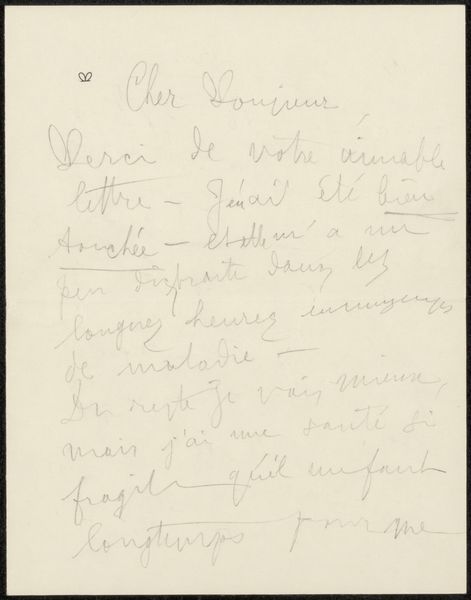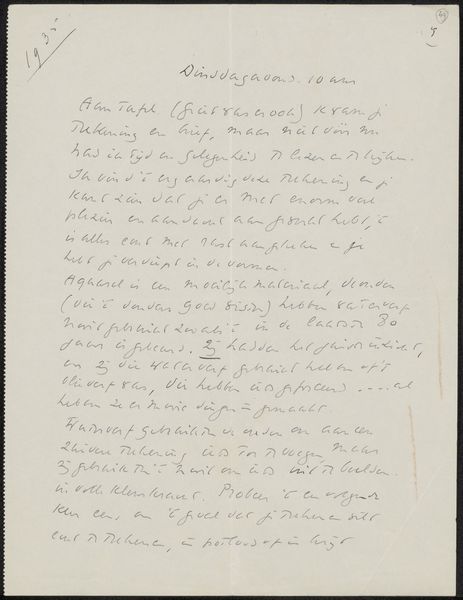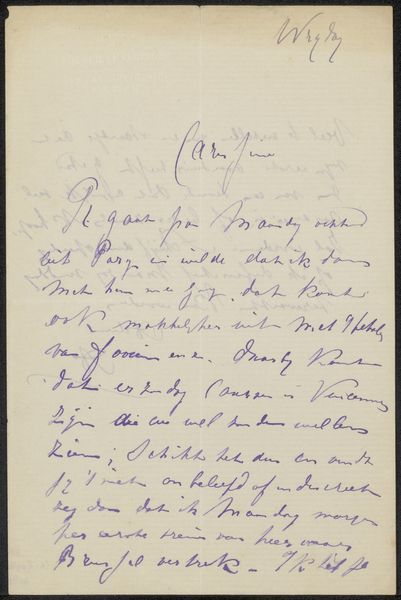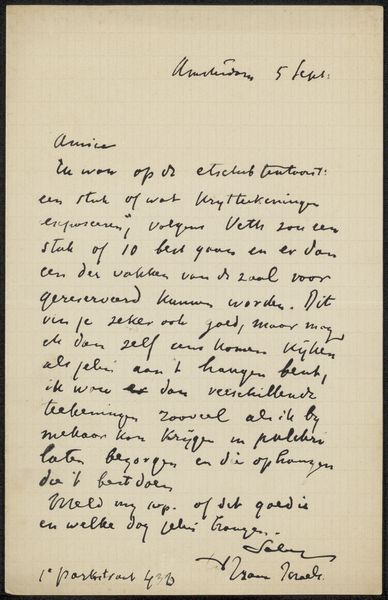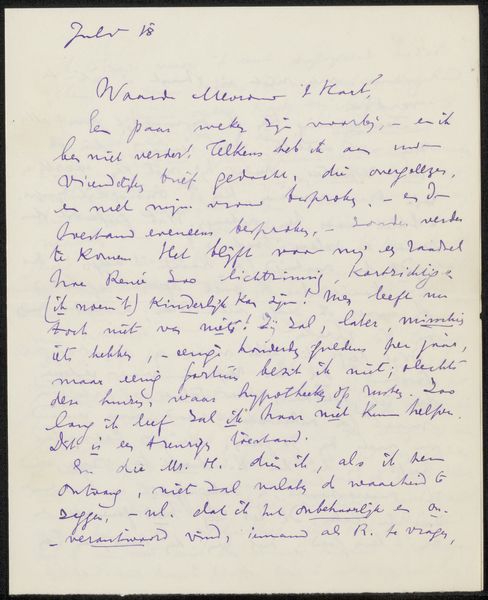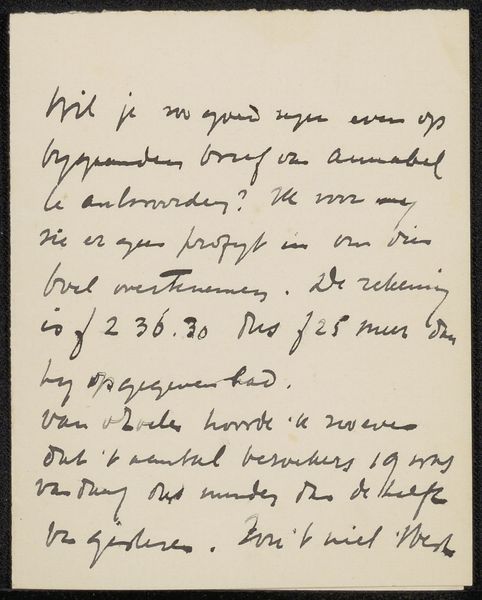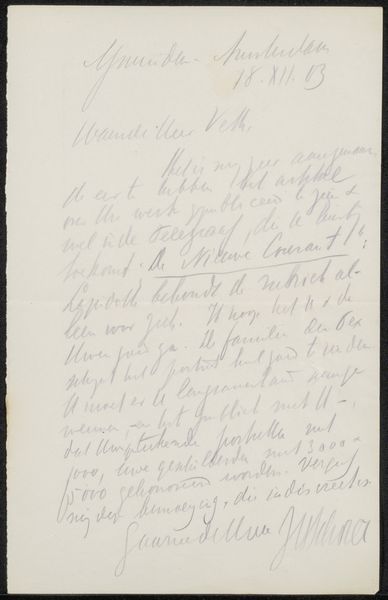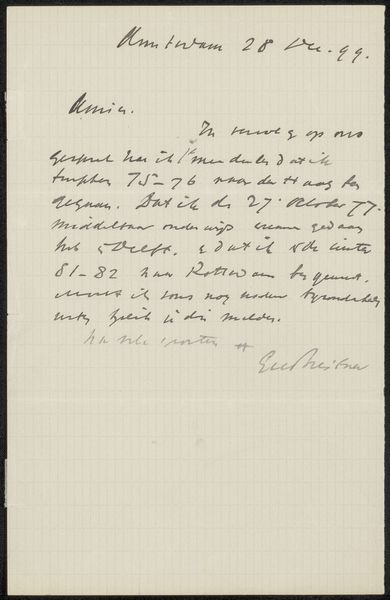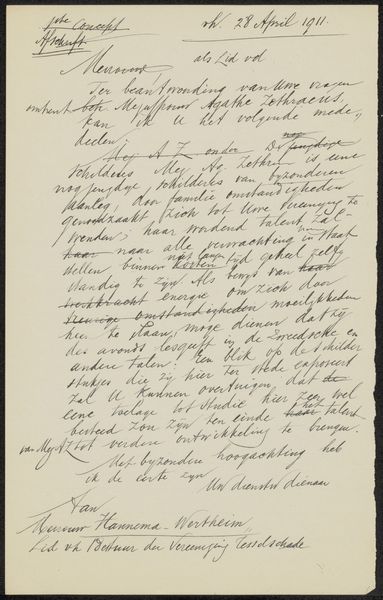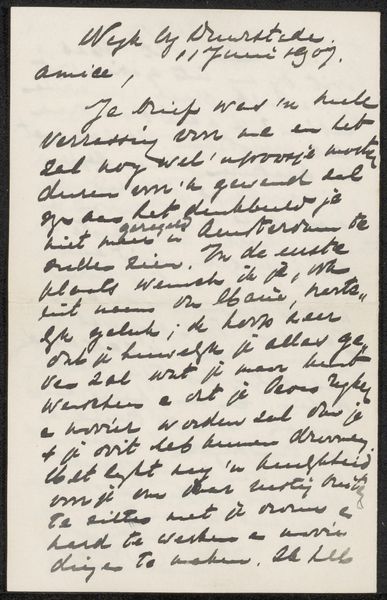
drawing, paper, ink
#
drawing
#
paper
#
ink
Copyright: Rijks Museum: Open Domain
Curator: We're looking at "Brief aan Alphonse Stengelin," believed to have been created between 1921 and 1923 by Philip Zilcken. It’s currently held at the Rijksmuseum and it’s a letter rendered in ink on paper. My first thought: it's so direct, so raw. Editor: It feels…vulnerable, somehow. Like eavesdropping on a very private conversation. I mean, you can almost see the hand that wrote this, the pressure applied to the pen. Think about the materials - paper becoming scarce after the Great War. Ink itself wasn't universally available, its production often tied to trade routes and access to resources. So even the medium here hints at the socio-economic realities of the time. Curator: Absolutely, and the letter format—so commonplace then, yet rare today. Its function, its dispatch via physical postal networks... That entire process becomes laden with meaning. Zilcken’s script isn't perfectly uniform. It suggests the speed and perhaps urgency of his thoughts. Do you think that influences the meaning? Editor: I do. Look, he's talking about sad things—time passing, things changing—but there's a life to it, you know? A hurried energy. Almost like capturing a feeling instead of simply relating information. Even if it is an everyday kind of document, its status changes as a work of art is recontextualized with social insight. It reminds us of material culture in history. Curator: It is interesting that Zilcken included such details in what he clearly thought was ephemeral, though the materials say a great deal about what resources were important in his time. Editor: Exactly! Plus the materiality heightens the sense of human connection—holding something someone else physically held and wrote. It becomes an artefact infused with Zilcken's existence and history. Curator: That interplay between personal expression and broader social context gives the piece a surprisingly potent charge, doesn’t it? It is truly wonderful how an intimate item like this holds universal truths of being. Editor: In a sense. This material and visual history invites speculation and provides insights. I think the materiality enhances our relationship to history as a whole and our own existence.
Comments
No comments
Be the first to comment and join the conversation on the ultimate creative platform.

